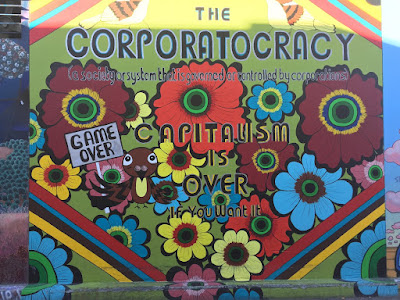Thao, you are now, and have always been so very meaningful to me as my cousin and best friend. I'm forever grateful for the unconditional love and support you have given me. Having grown-up with you and seeing what a great person you are, I have no doubt that both you and Kevin will have all the love in the world for one another. No matter what happens in life, I'll always be there to lend an ear, shed a tear and share a laugh. I love you.
Y'all enjoy these pictures from out on the range!
Houston, Texas
Menil Collection
The Menil Collection opened to the public in June 1987 to house, exhibit, and preserve the art collection of John and Dominique de Menil. It consists of approximately 17,000 paintings, sculptures, prints, drawings, photographs and rare books.
Rothko Chapel
The Rothko Chapel is an interfaith sanctuary. It's recognized as one of the greatest artistic achievements of the second half of the twentieth century and a work of religious art without equal.
The monolithic sculpture, Broken Obelisk, by Barnett Newman rises from a rectangular reflecting pool in honor of Dr. Martin Luther King Jr.
Rothko painted a suite of fourteen monumental canvases to hang in an octagonal space designed to his specifications.
Richmond Hall - Dan Flavin Installation
Dan Flavin. Untitled. 1996.
The Richmond Hall houses one of the artist's final works and one of his few permanent installations in the United States. A dark purple lined of UV lamps horizontally bisects each of the hall's long sides. Above and below that line are a repeating pattern of colored fluorescent tubes.
Menil Park
A bright red swing hangs from the sturdiest oak tree in the park. It was created as an “urban intervention” by a University of Texas architecture student, and is one of many in the globe-spanning Red Swing Project.
[Andrew swinging sideways]
MFAH - Mark Rothko: A Retrospective
Phalanx of the Mind. 1945. Oil on canvas.
Surrealism took New York by storm in the 1940s as artists sought refuge from war torn Europe. Rothko adopted Surrealism's use of automatic drawing to open up his composition and exploration of the unconscious.
The Omen of the Eagle. 1942. Oil and graphite on canvas.
Rothko began a new series of paintings in 1946 that later came to be known as multiforms. As the series progressed, he allowed himself the freedom of improvisation, exploiting color and tonal contrasts to give his paintings a more vivid presence.
Over the course of 1949, and for much of the rest of Rothko's career, he employed soft-edged, horizontal rectangles suspended within a monochromatic field.
Tell me more.
Untitled (Seagram Mural Sketch). 1959. Oil and mixed media on canvas.
By the end of the 1950s, Rothko was avidly sought after, and he was commissioned to create a cycle of paintings for Seagram's Four Seasons restaurant. Fearing the wrong environment for his work, he withdrew from the project, and donated the paintings on the condition that they be installed as a suite in a dedicated space.
Untitled (Harvard Mural Sketch). 1962. Oil, acrylic, and mixed media on canvas.
Rothko created five monumental paintings for Harvard using high-key blue and red palette. It was installed in the university's Holyoke Center, but unfortunately, the paintings faded from too much exposure to daylight.
Rothko's Blackforms, a series in which black, hard edge rectilinear forms are placed against a closely hued ground, are not meant to banish emotion, but rather elicit feelings from the viewer.
Untitled. 1957. Oil on canvas.
“It is really a matter of ending this silence and solitude, of breathing and stretching one's arms again.” - Mark Rothko
The Beer Can House
With the yard transformed, John turned his attention to the house. The first embellishments were garlands made from beer can tops, rims, and pull tabs that hung in a dense row from the eaves in front of the house.
The landscape and house are adorned with many different types of beer that mostly John drank himself (though his neighbors and his wife, Mary, were always glad to lend a hand). His favorite beer was always "Whatever's on special."
The cans also created a protective and energy-efficient covering that lowered the family's electric bills.
John Milkovisch. Bad Cat. Aluminum, wood, and steel armature.
Milkovisch's neighbor, Johnny Siml put up a "bad dog" sign though he'd never owned a dog. In response, Milkovisch, who didn't own a dog or a cat, decided to put up a "bad cat" sign.






























































